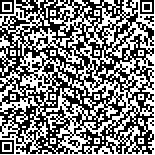| Quote
: |
周意, 李倩, 彭憬, 孙克伟, 银思涵.鳖龙软肝汤通过下调TGF-β1/Smad信号通路关键分子表达抑制肝癌的作用机制[J].湖南中医药大学学报英文版,2025,45(11):2072-2080.[Click to copy
] |
|
| |
|
|
| This paper
:Browser 3times Download 3times |
| 鳖龙软肝汤通过下调TGF-β1/Smad信号通路关键分子表达抑制肝癌的作用机制 |
| 周意,李倩,彭憬,孙克伟,银思涵 |
| (湖南中医药大学第一附属医院肝病研究所, 湖南 长沙 410007;湖南中医药大学第一中医临床学院, 湖南 长沙 410007) |
| 摘要: |
| 目的 探讨鳖龙软肝汤通过调节转化生长因子-β1(TGF-β1)/信号转导蛋白(Smad)通路抑制肝癌的药效机制。方法 60只SPF级雄性SD大鼠随机分为4组,包括正常组、模型组、鳖龙软肝汤低剂量组(6.84 g·kg-1·d-1)、鳖龙软肝汤高剂量组(27.36 g·kg-1·d-1),每组15只。除正常组大鼠外,其余大鼠腹腔注射二乙基亚硝胺(DEN)(50 mg·kg-1·w-1)构建肝癌模型,连续干预16周。在第8周对鳖龙软肝汤低、高剂量组予以相应剂量(6.84、27.36 g·kg-1·d-1)中药干预,连续干预8周。观察各组大鼠的一般状况;HE染色观察肝组织病理学损伤状况;Western blot和免疫荧光法检测TGF-β1、Smad2、Smad3、赖氨酰氧化酶样蛋白1(LOXL1)、Ⅰ型胶原蛋白(CollagenⅠ)、金属蛋白酶组织抑制因子1(TIMP1)、α-平滑肌肌动蛋白(α-SMA)的表达水平;免疫组化法检测增殖细胞核抗原(PCNA)表达水平。结果 正常组大鼠一般状况良好,精神、饮食、活动正常;模型组大鼠第16周精神萎靡不振,皮毛枯槁,饮食、活动明显减少;鳖龙软肝汤低剂量组与模型组无差异,鳖龙软肝汤高剂量组则精神好转、饮食增加。正常组肝细胞正常、肝小叶结构健全,模型组第16周出现异型肝癌细胞,鳖龙软肝汤低剂量组肝细胞坏死及炎症减轻,鳖龙软肝汤高剂量组肝细胞排列更规则、坏死与变性明显减轻。与正常组比较,第16周模型组体质量降低(P<0.05),肝脏体质量比升高(P<0.05),Ishak评分升高(P<0.05);肝组织中PCNA表达水平升高(P<0.05),TGF-β1、Smad2、Smad3、LOXL1、CollagenⅠ、TIMP1、α-SMA蛋白及mRNA表达水平升高(P<0.05)。与模型组和鳖龙软肝汤低剂量组比较,第16周鳖龙软肝汤高剂量组肝脏质量比降低(P<0.05),PCNA表达水平降低(P<0.05)。与模型组比较,鳖龙软肝汤低剂量组大鼠肝组织中TGF-β1、TIMP1、α-SMA蛋白表达水平降低(P<0.05),TGF-β1、Smad3、LOXL1、TIMP1 mRNA表达水平降低(P<0.05);鳖龙软肝汤高剂量组大鼠肝组织中TGF-β1、Smad2、Smad3、LOXL1、CollagenⅠ、TIMP1、α-SMA蛋白及mRNA表达水平降低(P<0.05)。与鳖龙软肝汤低剂量组比较,鳖龙软肝汤高剂量组大鼠肝组织中Smad2、α-SMA蛋白表达水平下降(P<0.05),Smad2、Smad3、CollagenⅠmRNA表达水平降低(P<0.05)。结论 鳖龙软肝汤可改善大鼠肝纤维化,抑制肝癌进展,其作用机制可能与下调肝组织中PCNA及TGF-β1/Smad信号通路相关分子的表达有关。 |
| 关键词: 肝细胞癌 肝纤维化 鳖龙软肝汤 转化生长因子-β1/信号转导蛋白通路 增殖细胞核抗原 二乙基亚硝胺 细胞外基质 |
| DOI:10.3969/j.issn.1674-070X.2025.11.007 |
| Received:June 25, 2025 |
| 基金项目:湖南省自然科学基金项目(2024JJ9442); 湖南省中医药管理局科研计划项目(D2022059); 国家中医药管理局高水平中医药重点学科建设项目(zyyzdxk-2023146); 湖南中医药大学双一流学科建设项目(2018[03]); 湖南省卫生健康科研课题(20257775)。 |
|
| Mechanism of Bielong Ruangan Decoction in inhibiting hepatocellular carcinoma via downregulation of key molecular expressions in the TGF-β1/Smad signaling pathway |
| ZHOU Yi, LI Qian, PENG Jing, SUN Kewei, YIN Sihan |
| (Hepatology Institute, the First Hospital of Hunan University of Chinese Medicine, Changsha, Hunan 410007, China;The First Clinical School of Chinese Medicine, Hunan University of Chinese Medicine, Changsha, Hunan 410007, China) |
| Abstract: |
| Objective To investigate the pharmacological mechanism by which Bielong Ruangan Decoction(BLRGD) inhibits hepatocellular carcinoma through modulation of the transforming growth factor-β1(TGF-β1)/Smad signaling pathway. Methods Sixty male SPF Sprague-Dawley(SD) rats were randomly divided into four groups: normal group, model group, low-dose BLRGD group(6.84 g·kg-1·d-1), and high-dose BLRGD group(27.36 g·kg-1·d-1), with 15 rats per group. Except the rats in the normal group, the remaining rats received intraperitoneal injection of diethylnitrosamine(DEN)(50 mg·kg-1·w-1) to establish a hepatocellular carcinoma model, with continuous intervention for 16 weeks. In Week 8, the low-and high-dose BLRGD groups received the corresponding doses(6.84, 27.36 g·kg-1·d-1) of BLRGD for 8 consecutive weeks. Gener al condition was observed in each group. Pathological changes in liver tissue were assessed using hematoxylin-eosin(HE) staining. The protein expression levels of TGF-β1, Smad2,Smad3, lysyl oxidase-like protein 1(LOXL1), type I collagen(CollagenⅠ), tissue inhibitor of metalloproteinase 1(TIMP1), and alpha-smooth muscle actin(α-SMA) were measured by Western blot and immunofluorescence assays. The expression level of proliferating cell nuclear antigen(PCNA) was determined by immunohistochemistry. Results Rats in the normal group exhibited good general condition, with normal mental status, food consumption and activity. At Week 16, rats in the model group were lethargic, had dull fur, and showed a significant reduction in food consumption and activity. No differences were observed between the low-dose BLRGD group and the model group, while the high-dose BLRGD group showed improved mental status and increased food consumption. Hepatocytes in the normal group were normal, and the hepatic lobular structure was intact; atypical hepatocellular carcinoma cells were observed in the model group at Week 16; hepatocyte necrosis and inflammation were alleviated in the low-dose BLRGD group, while in the high-dose BLRGD group, hepatocyte arrangement was more regular with markedly reduced necrosis and degeneration. Compared with the normal group, the model group at Week 16 exhibited decreased body weight(P<0.05),increased liver-to-body weight ratio(P<0.05), and increased Ishak scores(P<0.05); the expression levels of PCNA in liver tissue increased(P<0.05), along with the increased protein and m RNA expression levels of TGF-β1, Smad2, Smad3, LOXL1, CollagenⅠ,TIMP1, and α-SMA(P<0.05). Compared with the model group and the low-dose BLRGD group, the high-dose BLRGD group at Week 16 showed a decreased liver-to-body weight ratio(P<0.05), and reduced PCNA expression levels(P<0.05). Compared with the model group, the low-dose BLRGD group showed decreased protein expression levels of TGF-β1, TIMP1, and α-SMA in liver tissue(P<0.05), and reduced mRNA expression levels of TGF-β1, Smad3, LOXL1, and TIMP1(P<0.05); the high-dose BLRGD group showed decreased protein and mRNA expression levels of TGF-β1, Smad2, Smad3, LOXL1, CollagenⅠ, TIMP1, and α-SMA in liver tissue(P<0.05). Compared with the low-dose BLRGD group, the high-dose BLRGD group showed further decreased expression levels of Smad2 and α-SMA proteins in liver tissue(P<0.05), as well as reduced m RNA expression levels of Smad2, Smad3, and CollagenⅠ(P<0.05). Conclusion BLRGD can ameliorate hepatic fibrosis and inhibit the progression of hepatocellular carcinoma in rats, and its mechanism may be related to the downregulation of PCNA and key molecules in the TGF-β1/Smad signaling pathway in liver tissue. |
| Key words: hepatocellular carcinoma hepatic fibrosis Bielong Ruangan Decoction TGF-β1/Smad signaling pathway proliferating cell nuclear antigen diethylnitrosamine extracellular matrix |
|

二维码(扫一下试试看!) |
|
|
|
|


